Frank Dodd (Tony) Smith, Jr. - 2011

L Li Lj Lk i j k 1
Second Generation (8x8 = 64)
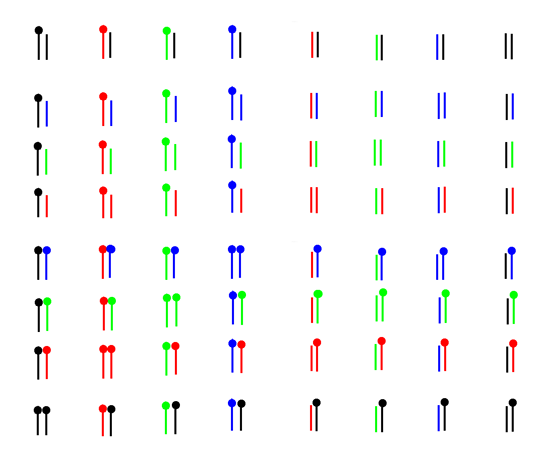
Mu Neutrino (1)

Muon (3)
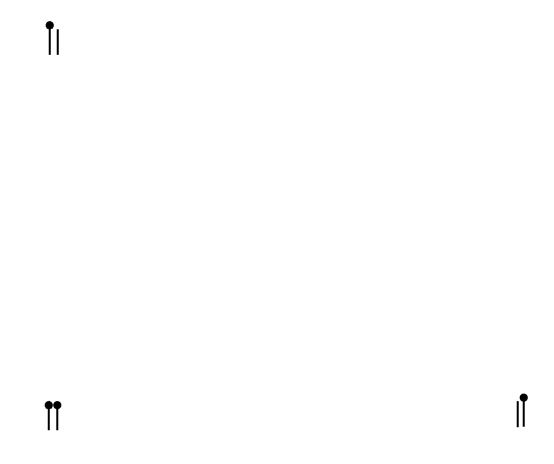
Blue Strange Quark (3)

Blue Charm Quark (17)
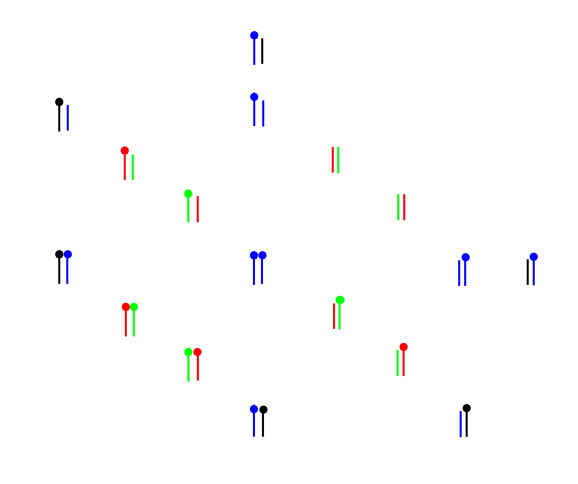
Third Generation (8x8x8 = 256)
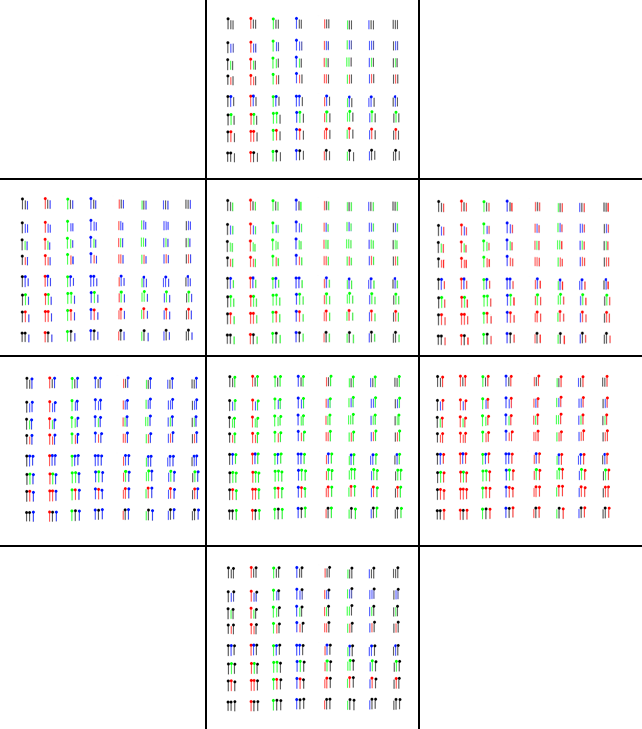
Tau Neutrino (1)
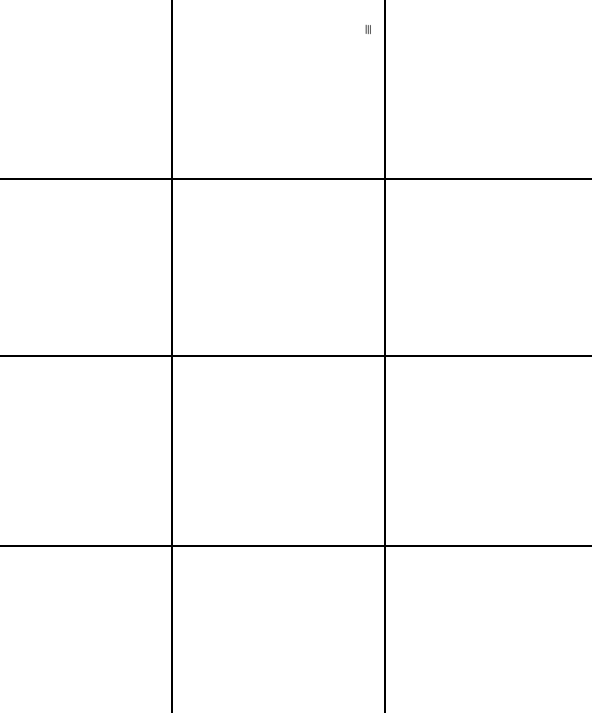
Tauon (7)
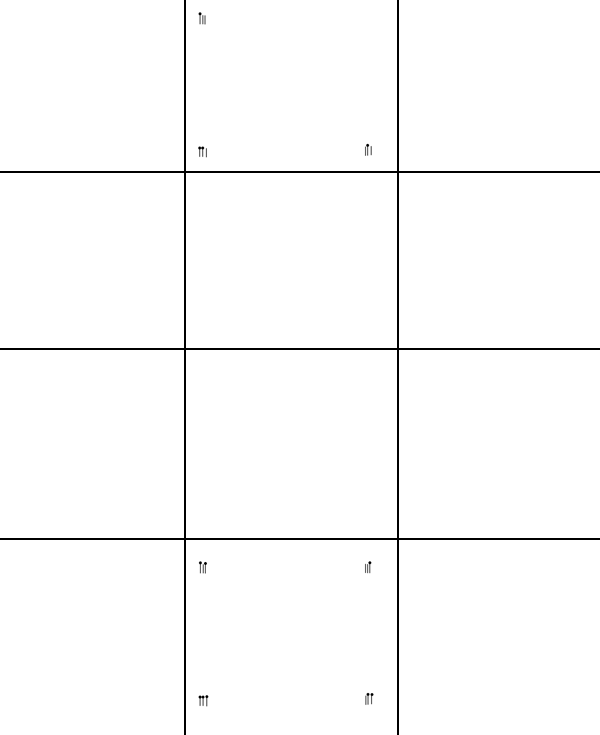
Blue Beauty Quark (7)
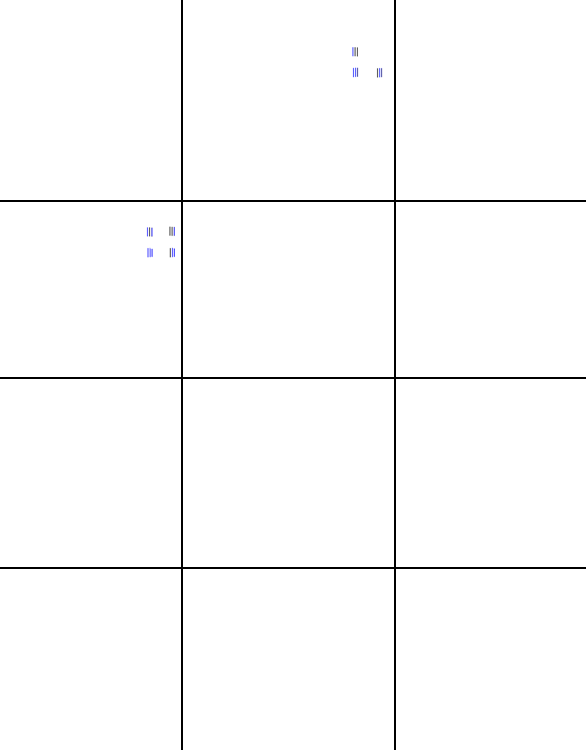
Blue Truth Quark (161)
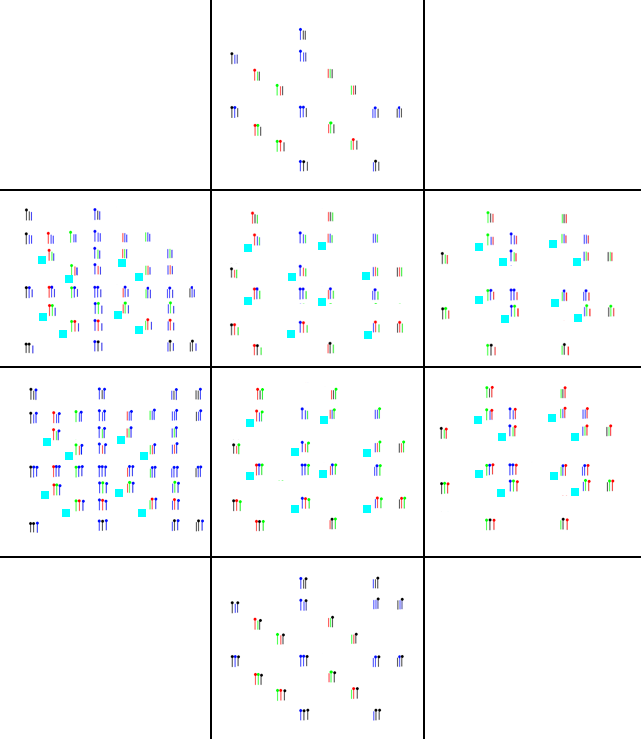
Blue Truth Quark (161)
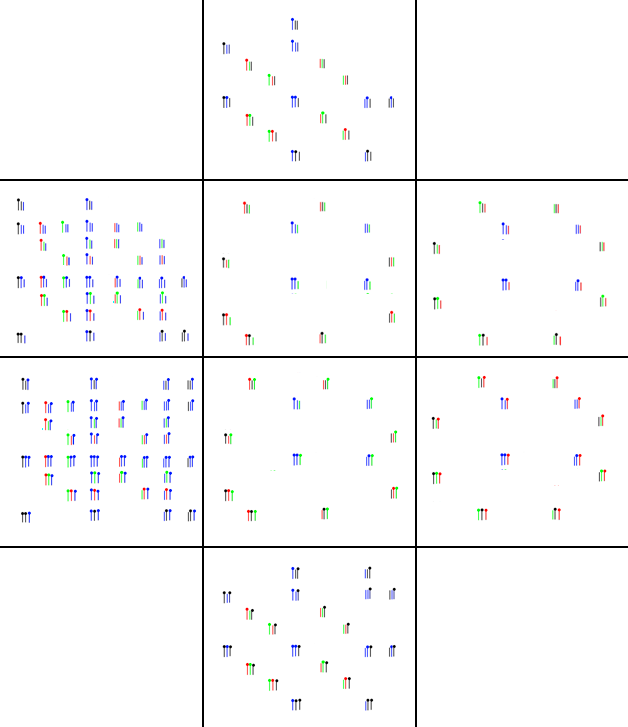
First
Generation (8)
electron
red green
blue
red green blue
neutrino
up up up down down down
quark quark quark quark quark quark
e ie je ke i j k 1
up up up down down down
quark quark quark quark quark quark
e ie je ke i j k 1

L Li Lj Lk i j k 1
The geometric representation of
Octonions is from arXiv 1010.2979 by Jonathan Hackett and Louis H.
Kauffman,
who say: "... we review the topological model for the quaternions based upon the Dirac string trick. We then extend this model, to create a model for the octonions - the non-associative generalization of the quaternions. ...
To construct this model of the quaternions using belt and buckle, we consider a belt that has been fixed to a wall with the non-buckle end. We consider rotations of the belt buckle about the three standard cartesian axes which we correspond to the three quaternionic roots of 1: i,j, and k. ... We ... get that carrying out any operation twice yields a belt that is twisted around by a full 2 pi ... if we perform 1 twice - giving us a 4 pi rotation - we can remove all of the twisting without rotating the belt buckle. ... We note that the operations are performed from left to right along a string of elements. ...
We construct our model for the octonions in a similar manner to the model for the quaternions. Rather than using a belt,
we will instead use a two toned ribbon (black on the back, and white on the front) with an arrowhead attached to one end (much as our belt had a buckle). The other end is then attached to the interior of a ring (much as our belt was attached to a wall). Lastly on the side of the ring we affix a flag that allows us to keep track of the orientation of the ring. ...
The operation L is defined by switching the side of the hoop that the flag is attached to, and performing a full 2 pi rotation of the hoop (or - alternately - the arrowhead) if the arrowhead is pointing up or if the state is flag-right, but not for both. ...
The original belt model of the quaternions is strongly related to the quaternions being a representation of SU(2), and SU(2) being a double cover of the rotation group SO(3).
The fact that this model of the octonions is an extension of the quaternionic model leads to the question of whether an analogue to the relationship with SU(2) and SO(3) exists. ...".
who say: "... we review the topological model for the quaternions based upon the Dirac string trick. We then extend this model, to create a model for the octonions - the non-associative generalization of the quaternions. ...
To construct this model of the quaternions using belt and buckle, we consider a belt that has been fixed to a wall with the non-buckle end. We consider rotations of the belt buckle about the three standard cartesian axes which we correspond to the three quaternionic roots of 1: i,j, and k. ... We ... get that carrying out any operation twice yields a belt that is twisted around by a full 2 pi ... if we perform 1 twice - giving us a 4 pi rotation - we can remove all of the twisting without rotating the belt buckle. ... We note that the operations are performed from left to right along a string of elements. ...
We construct our model for the octonions in a similar manner to the model for the quaternions. Rather than using a belt,
we will instead use a two toned ribbon (black on the back, and white on the front) with an arrowhead attached to one end (much as our belt had a buckle). The other end is then attached to the interior of a ring (much as our belt was attached to a wall). Lastly on the side of the ring we affix a flag that allows us to keep track of the orientation of the ring. ...
The operation L is defined by switching the side of the hoop that the flag is attached to, and performing a full 2 pi rotation of the hoop (or - alternately - the arrowhead) if the arrowhead is pointing up or if the state is flag-right, but not for both. ...
The original belt model of the quaternions is strongly related to the quaternions being a representation of SU(2), and SU(2) being a double cover of the rotation group SO(3).
The fact that this model of the octonions is an extension of the quaternionic model leads to the question of whether an analogue to the relationship with SU(2) and SO(3) exists. ...".
Perhaps relevant to that question is
the fact that SU(4) is the double cover of SO(6)
and the relationship to the Conformal Group SU(2,2) = Spin(4,2).
and the relationship to the Conformal Group SU(2,2) = Spin(4,2).
Second Generation (8x8 = 64)

Mu Neutrino (1)
Rule: a Pair belongs to the Mu
Neutrino if:
All elements are Colorless (black)
and all elements are Associative (that is, is 1 which is the only Colorless Associative element) .
and all elements are Associative (that is, is 1 which is the only Colorless Associative element) .

Muon (3)
Rule: a Pair belongs to the Muon if:
All elements are Colorless (black)
and at least one element is NonAssociative (that is, is e which is the only Colorless NonAssociative element).
and at least one element is NonAssociative (that is, is e which is the only Colorless NonAssociative element).

Blue Strange Quark (3)
Rule: a Pair belongs to the Blue Strange
Quark if:
There is at least one Blue element and
the other element is Blue or Colorless (black)
and all elements are Associative (that is, is either 1 or i or j or k).
and all elements are Associative (that is, is either 1 or i or j or k).

Blue Charm Quark (17)
Rules: a Pair belongs to the Blue Charm
Quark if:
1 - There is at least one Blue element
and the other element is Blue
or Colorless (black)
and at
least one element is
NonAssociative (that is, is either e or ie or je or ke)
2 - There is one Red element and one
Green element (Red x Green = Blue)

Third Generation (8x8x8 = 256)

Tau Neutrino (1)
Rule: a Triple belongs to the Tau
Neutrino if:
All elements are Colorless (black)
and all elements are Associative (that is, is 1 which is the only Colorless Associative element) .
and all elements are Associative (that is, is 1 which is the only Colorless Associative element) .

Tauon (7)
Rule: a Triple belongs to the Tauon if:
All elements are Colorless (black)
and at least one element is NonAssociative (that is, is e which is the only Colorless NonAssociative element).
and at least one element is NonAssociative (that is, is e which is the only Colorless NonAssociative element).

Blue Beauty Quark (7)
Rule: a Triple belongs to the Blue
Beauty Quark if:
There is at least one Blue element and
all other elements are Blue or Colorless (black)
and all elements are Associative (that is, is either 1 or i or j or k).
and all elements are Associative (that is, is either 1 or i or j or k).

Blue Truth Quark (161)
Rules: a Triple belongs to the Blue
Truth Quark if:
1 - There is at least one Blue element and all other elements are Blue or Colorless (black)
and at least one element is NonAssociative (that is, is either e or ie or je or ke)
2 - There is one Red element and one Green element and the other element is Colorless (Red x Green = Blue)
3 - The Triple has one element each that is Red, Green, or Blue,
in which case the color of the Third element (for Third Generation) is determinative and must be Blue.
1 - There is at least one Blue element and all other elements are Blue or Colorless (black)
and at least one element is NonAssociative (that is, is either e or ie or je or ke)
2 - There is one Red element and one Green element and the other element is Colorless (Red x Green = Blue)
3 - The Triple has one element each that is Red, Green, or Blue,
in which case the color of the Third element (for Third Generation) is determinative and must be Blue.
Candidates for Blue Truth Quark before
application of Rule 3 (193)
with the 48 Rule 3 Candidates marked by cyan square:
with the 48 Rule 3 Candidates marked by cyan square:

Blue Truth Quark (161)
